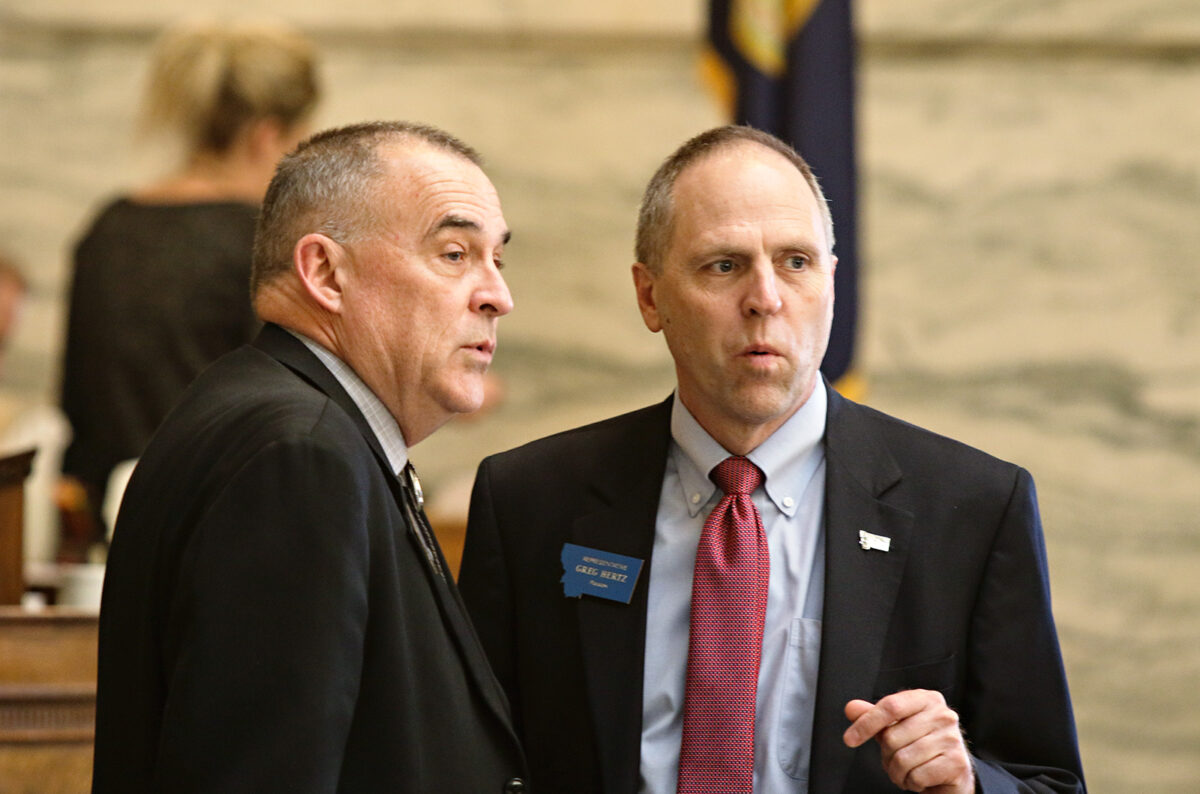Department of Revenue, Lawmakers Field Property Tax Anxieties at Kalispell Meeting
After Flathead County home values rose by nearly 50% during the state’s most recent property appraisal cycle, concerns have brewed about steep tax hikes for homeowners
By Denali Sagner
The Montana Department of Revenue (DOR) brought its statewide tour to Kalispell on Wednesday afternoon, hosting a public meeting to help taxpayers understand the property valuation process amid simmering concerns about skyrocketing property values across the state.
Montanans are currently receiving their 2023 reappraisal letters from the DOR, a process that has been accompanied by sticker shock this year as property valuations spiked considerably during the most recent reappraisal cycle.In Flathead County, median residential property values jumped by 45%, or $138,700, since the last appraisal cycle, a phenomenon that DOR representatives and lawmakers have attributed to the influx of new residents to the state since the pandemic.
“The more knowledgeable we are about how this works, the better off we are as a community,” Dawn Cordone, an area manager with DOR, said during the meeting this week.
Cordone provided a detailed presentation on the appraisal process, walking attendees through how properties are valued, why their appraisal may have gone up and what to do if they feel that DOR has incorrectly assessed their property.
When Cordone reached the question of whether or not residents’ property taxes would be going up, the DOR representative said she was unable to answer, prompting groans from the nearly 300 people gathered to attend the meeting.
Despite increases in assessed property values, the metric by which property taxes are calculated, inflated property values may not, in fact, correlate with considerably higher taxes. Adjustments to millage rates, new construction and local and state policy changes will impact the ultimate bill footed to taxpayers, as explained in a comprehensive guide created by the Montana Free Press.
Montana Sen. Greg Hertz, R-Polson, the chair of the Senate Taxation Committee, told the Beacon that if a taxpayer’s appraisal rose by 40%, they can expect their taxes to increase by roughly 6%. However, Hertz added, a clearer picture will only emerge after the state certifies taxable valuations and local governments iron out their budgets.
“It’s just really hard to predict what’s going to happen,” Hertz said.
Cordone noted that the tax assessments were calculated with last year’s millage rates, which will be adjusted to reflect the inflated property values, meaning that taxes will likely not go up as much as property values have. Cordone called it “unfortunate” that the department had to mail out assessments using last year’s millage rates.
“I would hope that will not be our tax consequence this year,” she said.

The Montana Legislature this session passed a handful of tax-relief bills, including a more than $1 billion tax cut and spending package that awards homeowners property tax rebates for taxes paid in 2022 and 2023. The bill also permanently cut the income tax rate for the wealthiest Montanans from 6.5% to 5.9%, and expanded an income tax credit for low- and middle-income families.
Montanans are eligible for up to $675 in property tax rebates per year for taxes paid in 2022 and 2023, which they can apply for beginning on Aug. 15. Taxpayers are also eligible for a one-time individual income tax rebate of up to $1,250 for taxes paid in 2021, which should be arriving automatically.
As the Wednesday afternoon meeting opened up to audience questions, attendees used the forum to express their frustrations about the changing nature of the Flathead Valley and the influx of wealthy residents that has contributed to rising costs and property values.
In one audience-submitted question, an attendee called it “morally wrong” to raise taxes on the elderly and rural residents.
“It’s clear that our property tax values have increased because of big money,” another question read, charging DOR with doing nothing to help.
Cordone emphasized repeatedly that she and her colleagues have no hand in tax rates, which are set by the state legislature and local governing bodies, and that she could only answer questions about the appraisal process.
Attendees turned their frustrations towards state legislators, demanding to know which lawmakers are responsible for the potential tax increases to come.
Rep. Courtenay Sprunger, R-Kalispell, attempted to field questions from increasingly aggrieved audience members, ensuring them that she personally voted for nearly every form of property tax relief that passed through the Legislature. Sprunger directed attendees towards the Montana Legislature website, where they can see how their elected officials voted on property tax bills, and urged them to call their state representatives to voice their concerns.

Sen. Mark Noland, R-Bigfork, also in attendance, seconded Sprunger’s push for attendees to contact their representatives, and called out Gov. Greg Gianforte, saying that the governor vetoed bills that would have relieved tax burdens.
The fate of tax rates have become embroiled in partisan finger-pointing in recent weeks, with Democrats charging the Republican-controlled Legislature with failing to address rising tax rates during the session. State Democratic leaders earlier this month called on the governor to bring the Legislature together for a special session to address rising property valuations.
“Again and again Montana Democrats pleaded with Republican legislators and Governor Gianforte to find long-term solutions to unaffordable property taxes,” Senate Minority Leader Pat Flowers, D-Belgrade, said in a statement. “They chose to do nothing and now Montanans are seeing the consequences of their inaction. We have one more shot to address the issue. I hope that the Governor finally decides to take this seriously.”
A November 2022 memorandum sent to legislators by the DOR foreshadowed a 43.11% rise in property values across the state for the 2023 appraisal cycle.
The DOR appraisal process presentation can be viewed here. More information about property and income tax rebates can be found here. Applications for Montana’s Property Tax Assistance Program (PTAP) can be found here.